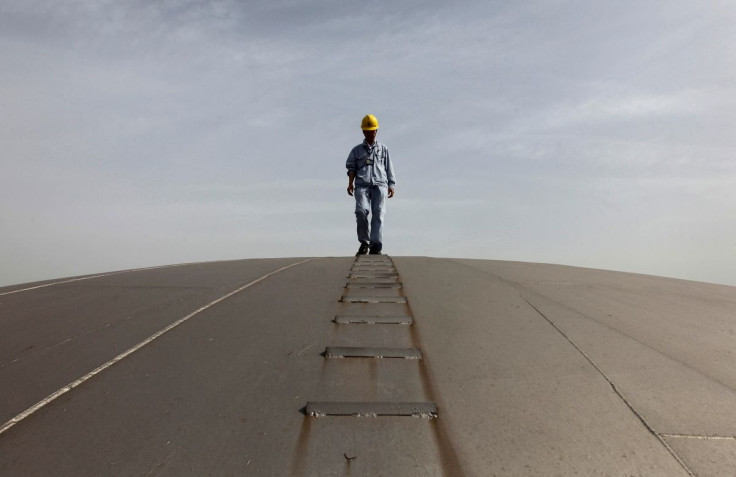Saudi Oil Rate Hike Comes With A Price For Asia

Rich Asian nations which are limping back to normalcy from the pandemic will give their cash-strapped counterparts in the continent a good run for their money as Saudi Arabia, the largest oil producer, hiked prices for its black gold, for Asia, its largest market.
Saudi state-owned oil producer Aramco has increased its key Arab Light crude grade for Asian customers by $2.10 a barrel from June to $6.50 above the benchmark it uses.
After a streak of hikes since February this year following the Russian invasion of Ukraine, global oil prices have skyrocketed 50 percent this year to almost $120 a barrel.
Saudi Arabia, the leading OPEC producer with a production capacity of 10.5 million barrels daily, is betting big on higher demand from Asia as China, Asia's largest oil importer, and the Southeast nation of Singapore are ending the pandemic lockdowns that threw normal life out gear and economic activities to a grinding halt in the past two or three months.
After fully re-opening, India's economy, Asia's second-largest, maintained momentum in April from the depressing demand earlier. Economic activities have started gaining ground with exports growing at the fastest pace, rising 30.7 percent in April from $40.2 billion a year ago. Though imports rose 31 percent to $60.3 billion, it left a trade deficit of $20.1 billion from $18.5 billion in March.
However, in India's case, higher oil prices have widened the current-account deficit to at least 3 percent of the gross domestic product, compared with a 2 percent sustainable level.
The Kingdom, the largest oil exporter in the world, sends more than 60 percent of its crude exports to Asia, with China, Japan, South Korea and India as top destinations.
The hike by Saudi comes as more Asian refiners in the Philippines, Taiwan, South Korea, Japan and Thailand are expected to increase their intake of oil following the latest OPEC+ decision to increase production on July 2. Similarly, refiners in China and India, the two largest economies in Asia, are widely expected to absorb Russian crude which comes on their way at a concessional rate as the EU is shying away from it due to the U.S.-led sanctions.
Barring a few nations like Brunei and Malaysia, most Asian nations are net oil importers who are already burdened with rising high inflation due to skyrocketing energy prices.
Thailand's retail inflation recorded its highest in nearly 14 years, with consumer prices rising 7.1 percent from a year earlier in May.
Ronnarong Phoolpipat, director-general of Thailand's trade policy, said the pressure on inflation remains as fuel and energy costs continue to go up.
Core inflation excluding volatile food and oil prices in South Korea, Asia's fourth-largest economy, advanced 3.4 percent year-on-year in May, the highest since February 2009. In India, core inflation (excluding food and fuel) has reached a high of 6.8 percent, according to the latest Reserve Bank of India data.
The hike by Aramco follows OPEC+, the 23-nation cartel, led by Saudi Arabia and Russia, which decided to accelerate output increases. The cartel's decision to open their spigots more freely will add 648,000 barrels a day to the global market in July and August, when the demand peaks in the summer season.
However, only Saudi and the United Arab Emirates are the only cartel members currently who sit pretty with significant spare capacity.
The hike in the official selling prices (OSPs) by Saudi Arabia is at odds with OPEC+ decision to increase its production to bring down prices, however.
Asian nations with large debts and little forex reserves like Sri Lanka, Pakistan, and Nepal are going to be hit hard by the ill effects of high oil prices due to their weak currencies and competition from their rich Asian counterparts who are rebounding from the pandemic. Already, higher fuel bills have exacerbated inflation in these countries with food prices going through the roof, leading to unrest and protests.
Facing its worst-ever economic crisis, an elected government was shown the door in Sri Lanka and Pakistan is knocking on the doors of the International Monetary Fund, which has asked Islamabad to raise fuel prices as a condition to seal the deal for aid.
In Southeast Asia, Myanmar and Laos face gasoline and diesel shortages. In junta-controlled Myanmar, access to dollars is restricted, so buyers are unable to pay for imports. In Laos, serpentine queues were seen at petrol stations last month.
For these nations, higher Saudi oil prices feed into a downward spiral, as higher fuel import bills weaken the currency, making oil imports expensive at the same time.
But Russia, the second-largest oil producer, will lure them with its heavy discounted oil, purely from a price standpoint of Saudi Aramco.





